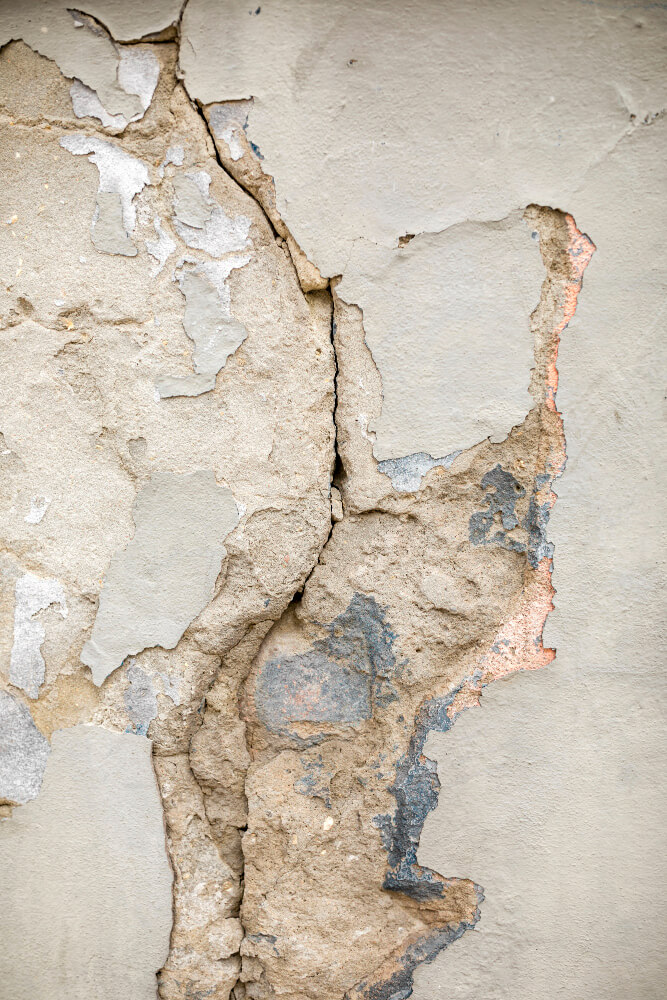Sizes, Symptoms and Solutions of Building Crack

We all are familiar with cracks occurring in the wall, slab
and beams of our houses. We are ignoring cracks in our houses daily simply
because we are unknown what the crack is all about and how serious is the
consequence of cracks in our residential as well as commercial building.
We hereby show you how to assess and prevent the cracks in
your buildings. At first, we classify the cracks of buildings based on their
sizes and give you the solutions together.
Crack in walls, Should I be worried for fix?
Should you be always worried with the cracks? No, but it all
depends on size of cracks. According to our experience and research, we have
divided cracks in buildings in six categories.
Cracks of sizes greater than 25mm
Whenever we see cracks of sizes
greater than 25mm, we say that the cracks signify severe structural damage.
Structural damage may have occurred due to subsidence of ground or by excess
earthquake load or live load occurring during the life of building. Effects
like walls leaning and beams losing bearing are seen. If the number of cracks
are more than one, the crack size may be lesser than 25mm for the same category.
These building often require dismantling all together because the floor sloping
is severe most. This level of damage can be categorized as 3rd level
of damage.
Cracks of Sizes greater than 15mm but lesser than 25mm
If the cracks seen is in the range of greater than 15mm but
lesser than 25mm, then we can say that extensive damage has occurred in the building.
Common symptoms of extensive damage include building floors sloping noticeably
and the doors and windows of buildings distorted in size. Beams lose bearing with column partially or
sometimes fully and service pipes are disrupted. If the number of cracks are
more, then the sizes of the cracks may be lesser than this but according to the
symptoms, we can say that building has been damaged with requirements for maintaining
doors and windows and sometimes rebuilding floors. The causes can be thermal or
ground settlement. This level of damage can be categorized as 2nd category of
damage. The solution for this problem could be grouting. Grouting is done by
placing grouting nozzle and applying grout using a pressure machine at a
pressure of 500psi. This requires especially skilled manpower and equipment and
is costlier too.

Cracks of size 5 mm to 15 mm width
If we see a single crack in a wall bound between two beams
and two columns and its size lies between 5mm to 15mm, then we say that
building has not been damaged up to that point where major maintenance is
required. The symptoms that we see are the service pipes fracturing and doors
and window sticking not providing weather tightness. These cracks are
maintained often by replacing small segment of cracked brickwork with new
brickwork and repointing of the brickwork in most of the cases. This level of
damage can be categorized as 3rd category of damage.
Cracks widths ranging from 1mm to 5mm
These are not structural cracks. These cracks can easily be
filled. However, there is high chance that these cracks will recur. If these
cracks recur, some new designs in form of linings can be made in order to hide
these cracks. The symptoms of these crack are doors and windows might stick
slightly with masonry, removing the groove out. They may sometimes require
repointing works in the exterior brickwork in order to ensure weather
tightness. Repointing can be carried out using crack seal. At first, the crack
is widened using grinder and the cracks are cleaned using wire brush and then
washed with water. After completely drying the surface, a layer of crack seal
is placed. The crack seal is allowed to dry and then applied twice. This
ensures that the crack is completely filled. Then the surface is prepared and
paint is applied for final finish.

Cracks of width up to 1mm
These cracks are only restricted to internal walls and
rarely extend up to external walls. Application of putty can cover this crack
problem and it doesn’t have high rate of recurrence.
Cracks of width 0.1 mm
These cracks are often called hairline cracks. It shows
itself in smooth surfaces only. It is not at all significant and doesn’t
require any solution. It should only be given attention if the width of the
crack increases seasonally or gradually increase over time. In such case,
seepage or ground settlement might have happened.
Conclusion